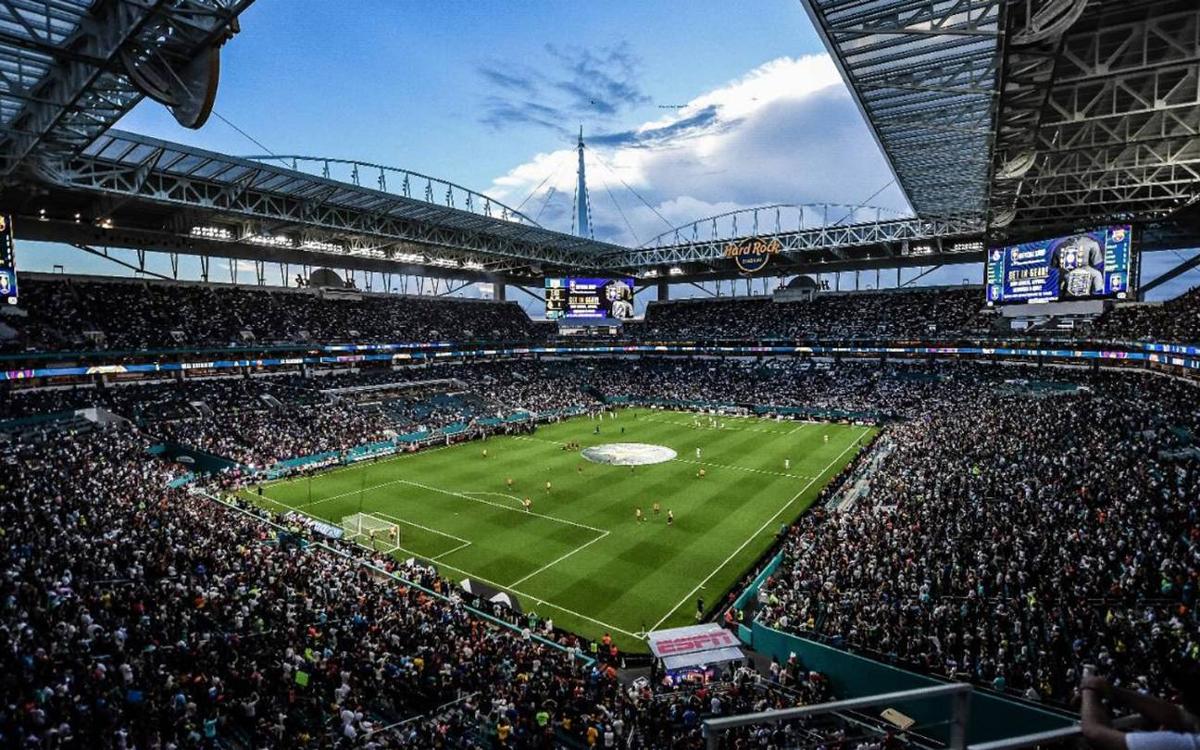Historic Miami Clásico as American as apple pie
- Viber
- Messenger
- Copy link
MIAMI GARDENS, Florida — An El Clásico in the United States is an El Clásico on steroids. That’s what you get when you take the biggest rivalry in soccer history, and perhaps all of sport, and bring it to American soil, a land famous for the shows of New York and the spectacles of Hollywood, and put it on before a fan base long starved of a soccer game to match the country’s outsized reputation for thinking big and bold.
Many of the buildup and pregame activities surrounding Saturday night’s clash between FC Barcelona and Real Madrid at Hard Rock Stadium in Miami Gardens, Florida were relatively like those held prior to games in New York and Washington DC. But the energy and sheer fervor surrounding this match, which some were calling the Summer Super Bowl, went far beyond anything ever experienced before in the United States. And, perhaps most shocking, it was all for a preseason friendly.
Hard Rock Stadium only holds 65,000 people—the announced attendance of 66,014 beat that too—far fewer than the 80,000 strong that sold out MetLife Stadium and FedExField during the first two legs of the tour. But despite the deficit in bodies, there was quadruple the intensity.
Every rush into the final third was met by fans rising out of their seats with the anticipation usually reserved for Game Sevens in the World Series and the NBA and Stanley Cup Finals. On this night, however, it felt like the sum of all three. It even made the annual UEFA Champions League Final—no slouch itself as far as major sporting events are concerned—feel relatively small and subdued in comparison.
An early Messi goal turned it up to a notch so high that, if the El Clásico Miami were an appliance, it would have snapped the knob right off. Chants of Olé! Olé! accompanied a series of triangulating passes that had the Barça midfielders playing the role of the matador tormenting a big white bull. Ivan Rakitic made it 2–0 for Barça, and then his Croatian countryman Mateo Kovacic pulled one right back for Madrid, the game’s first three goals coming before the quarter-hour mark.
This Clásico was billed as a friendly, but as any experienced soccer fan knows, a Clásico friendly is an oxymoron. Make no mistake, Barça and Real Madrid, as always, were going all out. It was just what the people here were expecting when they plunked down hundreds, and even thousands, of dollars for a coveted seat around the rectangular grass table specially set up on this hot and humid night in south Florida.
It had all the pomp and circumstance of a Super Bowl, with Prince Royce singing the national anthem before kickoff and Marc Anthony providing an on-the-field half-time show never seen in the world of soccer, but which was every bit worthy of the NFL’s annual championship game. At the break, scores of workers wheeled an entire stage onto the field in pieces and set it up before taking it apart and wheeling it back off again less than 15 minutes later.
The lights dimmed and, for a quarter-hour, the El Clásico Miami became a major concert venue.
Early in the second half, Gerard Piqué gave Barça the lead anew. About fifty percent of the crowd leapt out of their seats in joy, while the other fifty percent sunk down in disappointment. By the 75th minute, though, both halves of the heavily pixeled blaugrana and white mosaic ringing the stadium joined together—quite possibly for the first time ever—to do the wave.
The El Clásico may have been born in Spain, but on this night, it was as American as apple pie.
- Viber
- Messenger
- Copy link

